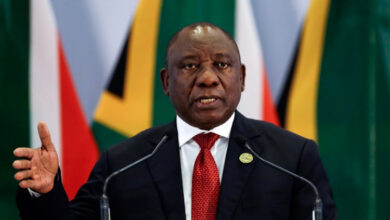South Africa
South African President Vows To Take Measures To Address Load Shedding Issue

South African President Cyril Ramaphosa on Monday promised to take measures to stabilize the electricity system in the country, which has endured a series of challenges in the last few weeks resulting in severe load shedding, reported The CGTN Africa.
In a statement released on Monday, Ramaphosa said the state-owned power utility Eskom is working to reduce load shedding to lower stages.
“We will soon be completing the detailed work and consultations needed to finalise these further measures,” Ramaphosa said in his weekly letter to the nation.
He said the government will soon announce a comprehensive set of actions to achieve much faster progress in tackling load shedding.
The South African president pointed to an agreement between Eskom and labor unions to end a strike over wages to facilitate critical repairs and restore the operations of additional units.
Due to strike by workers, coupled with unit breakdowns, Eskom lose more than 8,000 megawatts (MW) of generation capacity forcing it to implement Stage 6 load shedding late last month.
Ramaphosa said the transmission line from Cahora Bassa in Mozambique has been restored, adding 600 MW to the grid, and Medupi Unit 6 returned to service on Saturday, adding another 720 MW. He assured that additional units will come back online in the coming week, further easing the current shortfall.
The president added that security agencies were also working to tackle sabotage, theft and fraud at Eskom but stressed that the country ultimately needed to add more capacity to its electricity grid.
He said adding of additional units will create space for Eskom to undertake critical maintenance and increase the reliability of its fleet. It will also create a buffer so that even if several units experience breakdowns at once, other sources can be used.
The South African president had made reforming Eskom and addressing the country’s power crisis a priority as power cuts cost the nation millions of dollars per day and adversely affect investor confidence.






